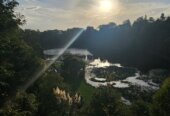Steel has been removed from Cambridge Water Tower’s exterior.
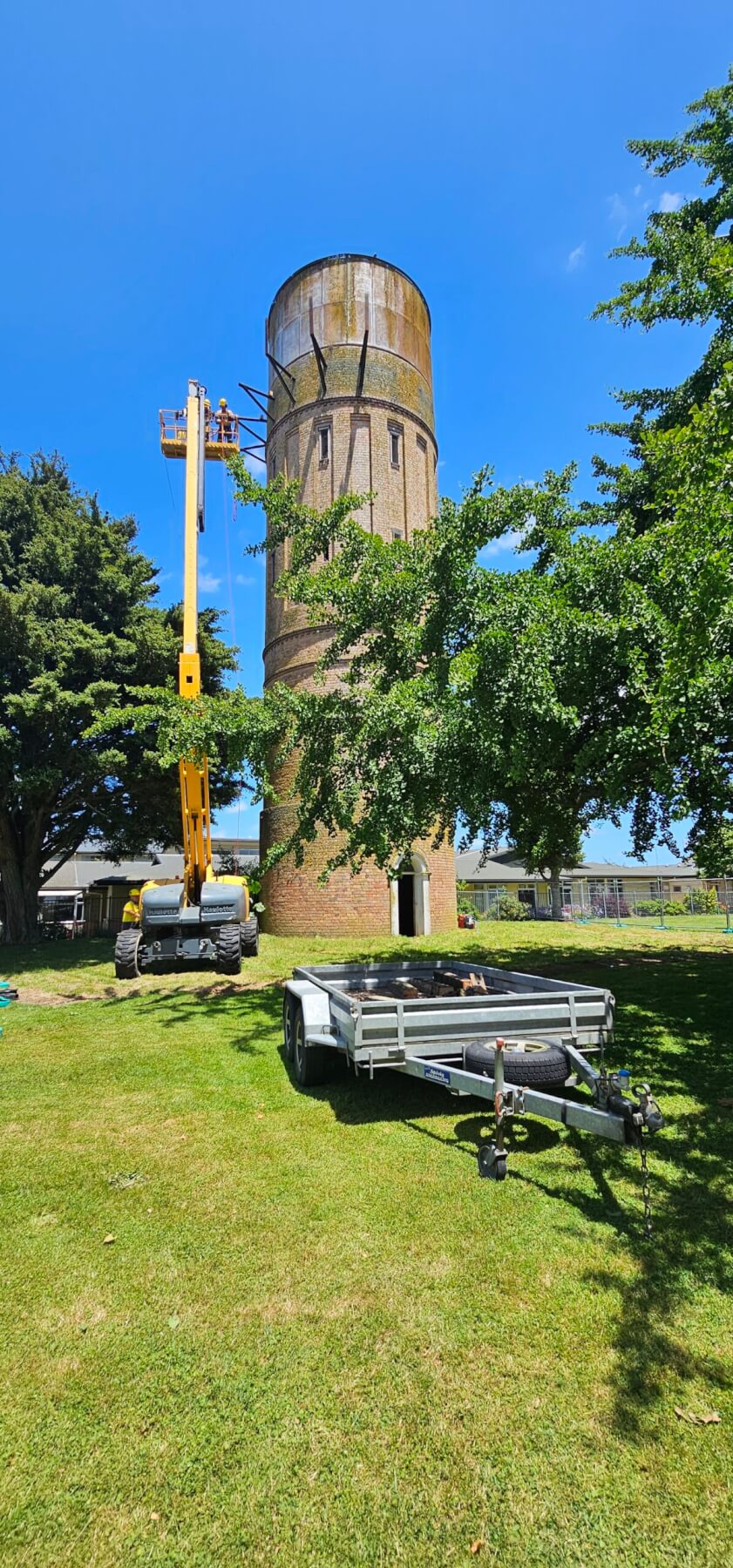
Water Tower surrounds taken down. Photo: Mary Anne Gill
Pigeons were among the curious as Te Awamutu contractors Phillip McGough took off the corroded outer ladder and walkway first installed in 1902 and used by citizens as a vantage point for many years.
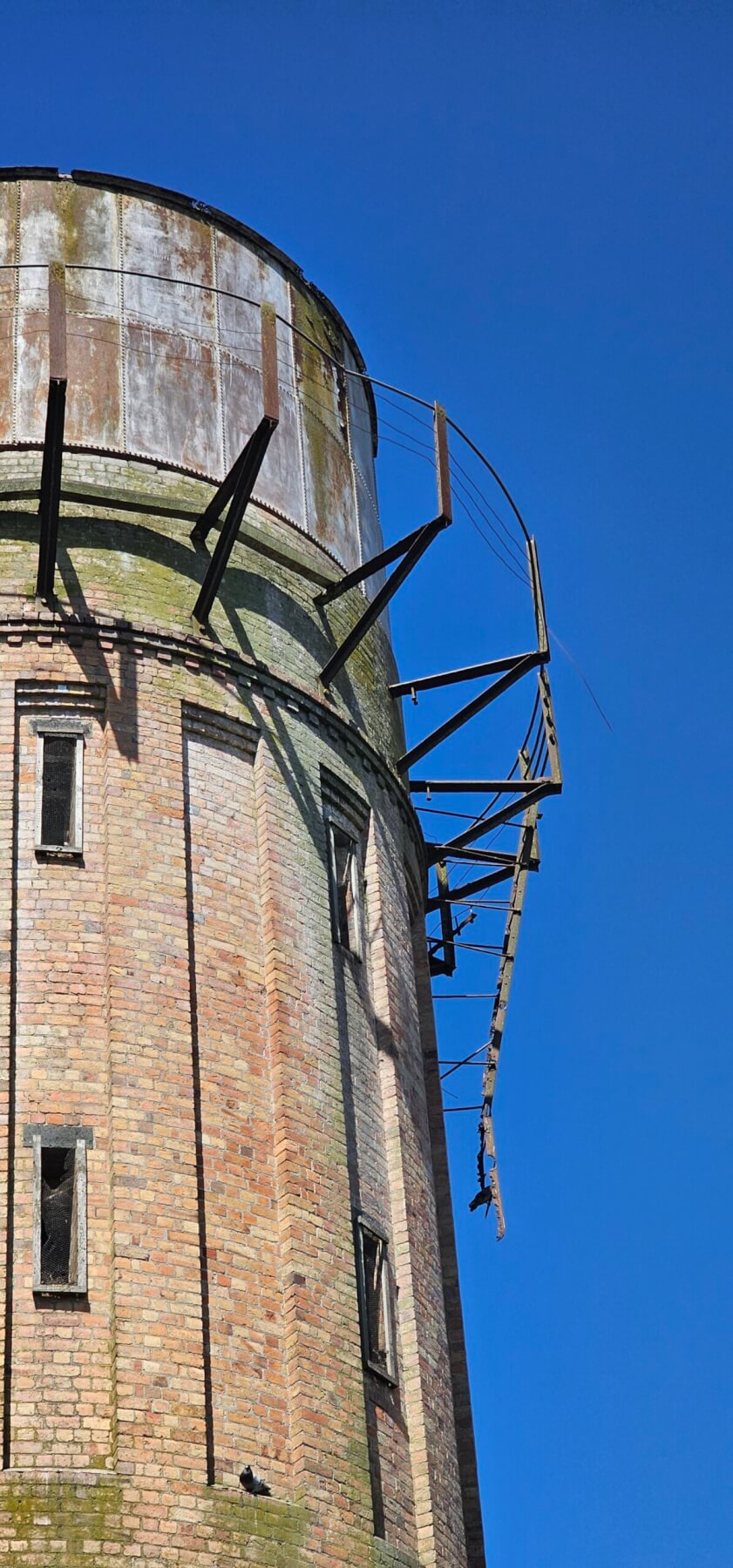
Cambridge Water Tower with the surrounds.
The removal of the corroded steel forms part of the consent that was obtained in 2022 for the removal of the water tank at the top of the tower.
While there, contractors assessed the bricks and mortar to form part of a detailed seismic assessment which the council will use to decide the tower’s future.
As part of its long term planning, council went to the community to find out its views on the earthquake prone tower – save or demolish.
But there was some disparity between the figures council used – it said strengthening would cost $6 million while demolition would only cost $800,000. Most of the community went with the latter.
But a rear guard action by a group of residents calling themselves Save the Cambridge Water Tower resulted in demolition plans being put on hold and subsequently saw another price come through.
They figures they sourced, which suggested the tower could be saved using “adaptive reuse” – a term used by heritage architects – was $2 million.
The tower opened at 3pm on Wednesday 11 March 1903, the only wet day for weeks, newspaper reports of the day said.
Engineer Ashley Hunter said at £6000 ($1.34 million today) it was the cheapest water supply in the colony. Mayor Frank Buckland started the pump in town and then walked to the tower where he turned the water on.
He headed back to Victoria St where a hose was attached to a hydrant to show the water pressure. Water spouted 40 feet (12.2 metres) into the air and the crowd cheered Buckland and Hunter.
After the formal opening, Buckland provided champagne at the Criterion Hotel for the councillors so they could toast the officers and contractors.
The supply closed in 1926 because the water from the Moon Creek Spring was polluted.
The tower is a Category A historic building in the Waipā District Plan and in 2010 became a Category 2 Heritage Building with Heritage NZ.
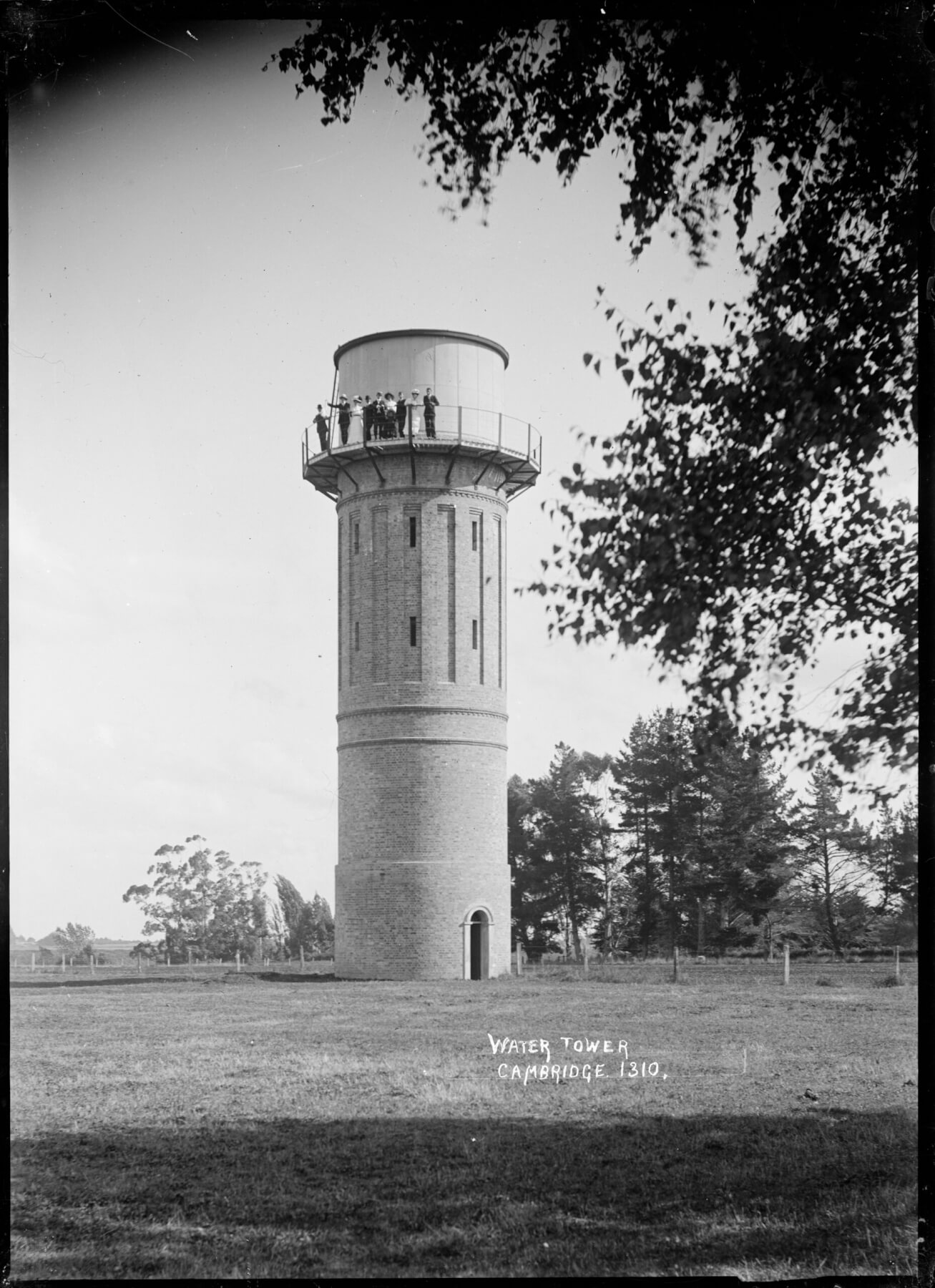
The Water Tower in 1910 with observers waving from the top of the curved walkway. Photo: Alexander Turnbull Library.
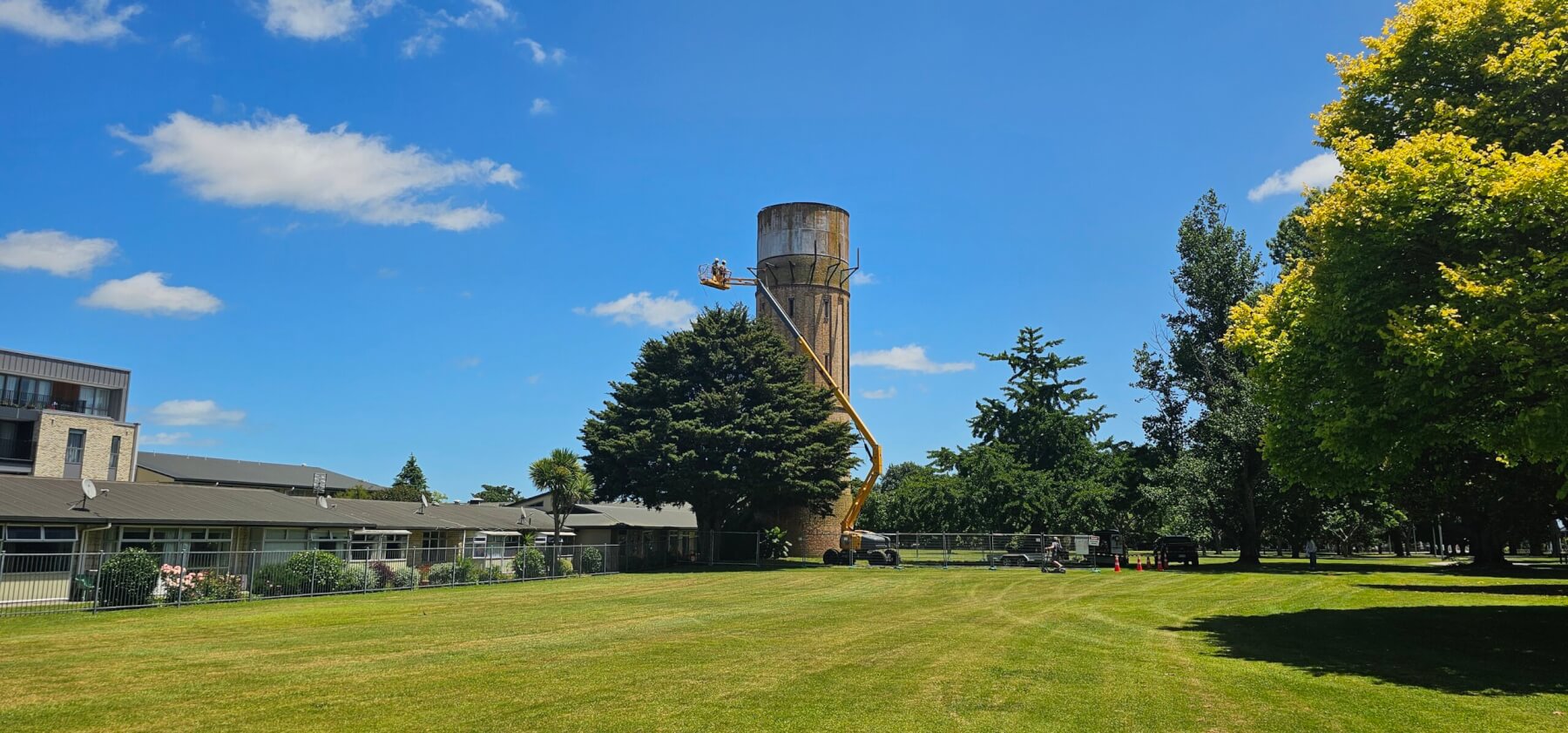
Water Tower surrounds taken down. Photo: Mary Anne Gill
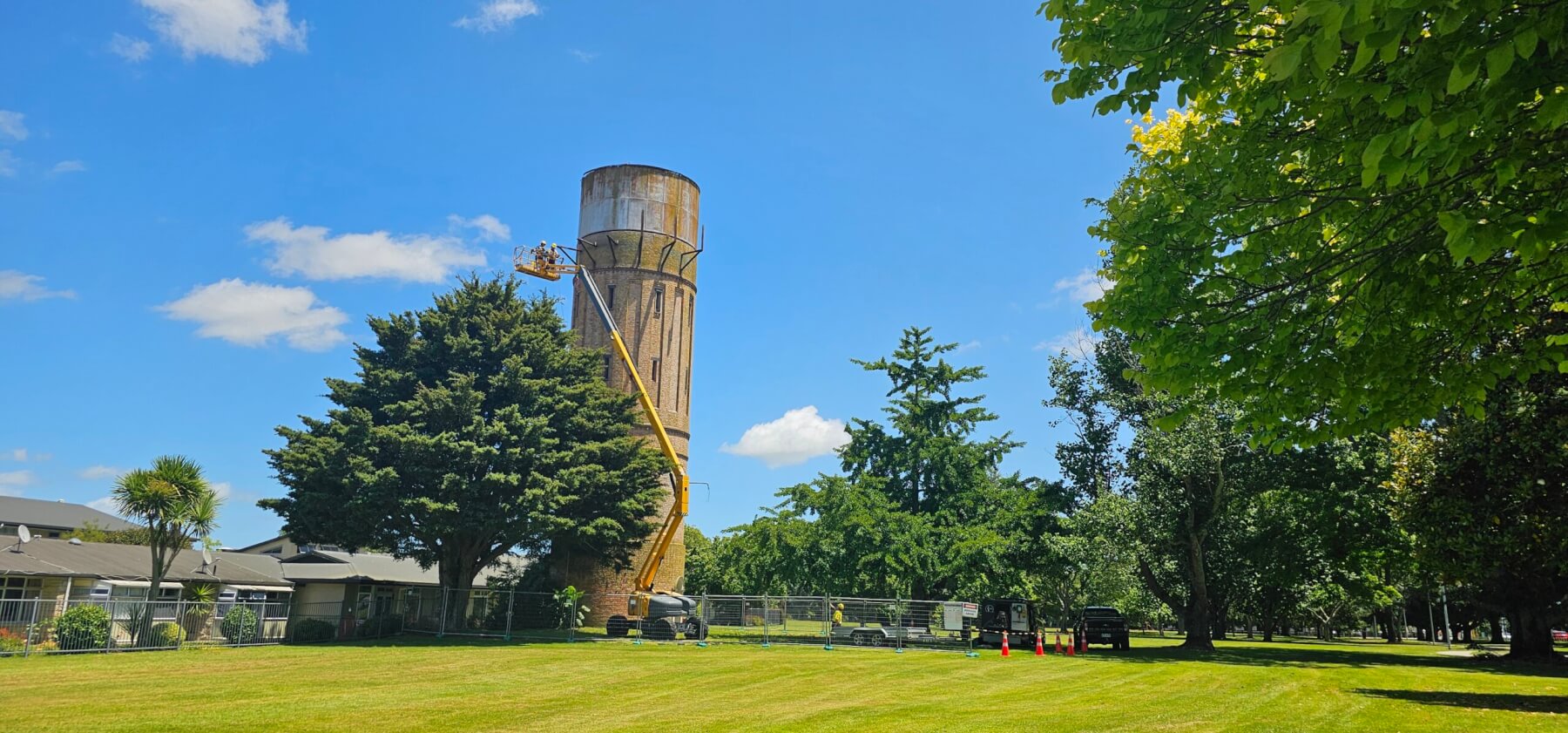
Water Tower surrounds taken down. Photo: Mary Anne Gill
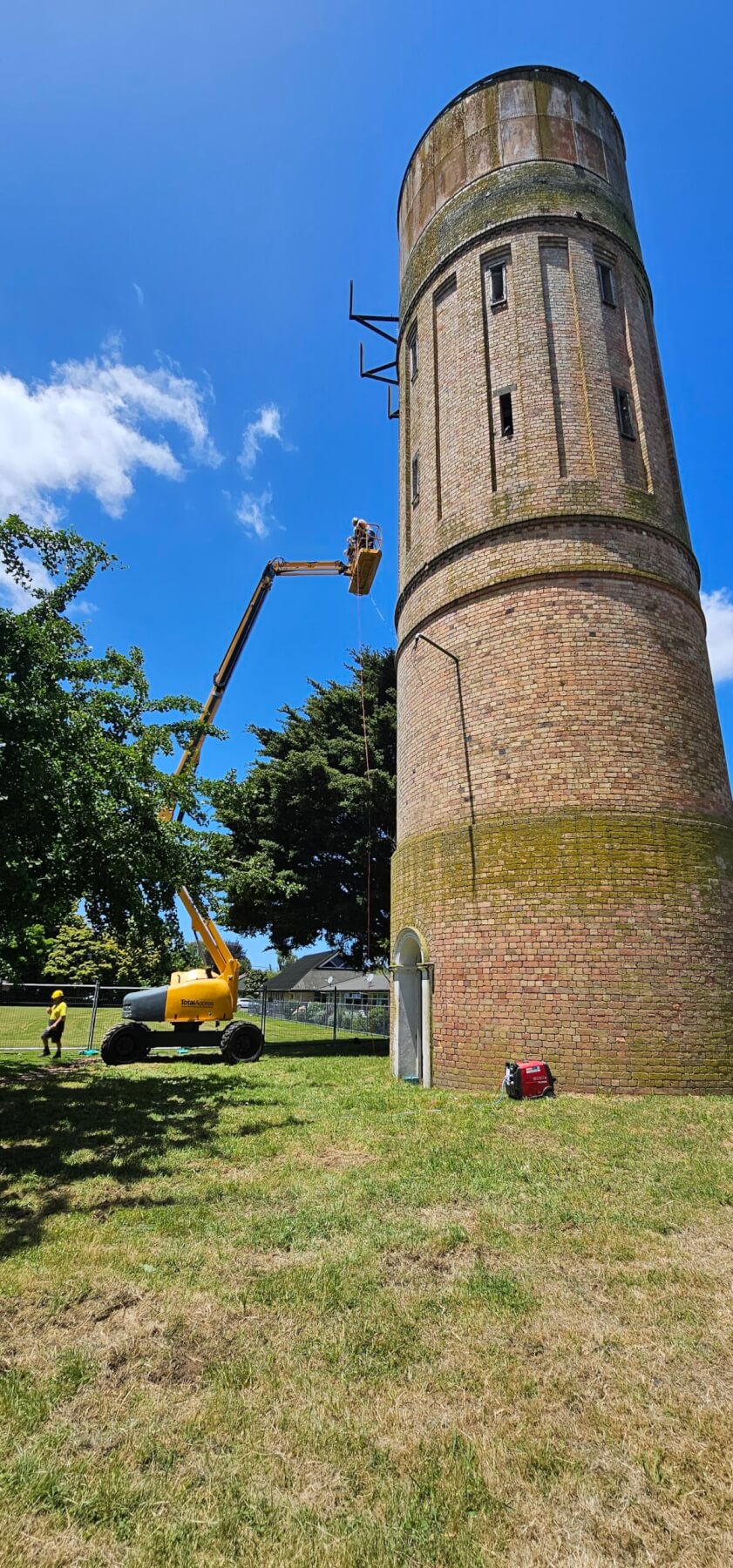
Water Tower surrounds taken down. Photo: Mary Anne Gill




